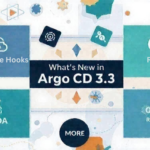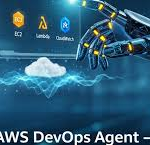
Kubernetes 1.34: Exploring the Exciting Alpha Features
As Kubernetes gears up for its 1.34 release on August 27th, 2025, it brings a treasure trove of powerful capabilities especially aimed at improving device management, pod lifecycle controls, and cluster scheduling performance. Designed to empower cluster administrators, application developers, and DevOps teams alike, these alpha features promise to make Kubernetes more robust, flexible, and efficient.
1. Enhanced Node Resource Health Monitoring
Kubernetes now introduces the ability to track the health status of devices allocated to Pods using Dynamic Resource Allocation (DRA). This feature makes troubleshooting easier by distinguishing hardware faults (e.g., GPUs or FPGAs) from application errors. The resourceHealth field in Pod status indicates real-time health via Healthy, Unhealthy, or Unknown states. This transparency helps kubelet detect hardware failures and safely reschedule Pods.
2. Fine-Grained Container Restart Rules
Imagine you are running hundreds of cost-intensive GPU pods training an LLM model. Previously, a simple recoverable error would mark the whole Pod as failed and trigger costly rescheduling. The new restart policy rules allow Kubernetes to restart individual containers in place based on specific termination codes, even if the Pod-level restartPolicy is set to Never. This will dramatically reduce downtime and improve resource efficiency.
3. Environment Variables from Files with FileEnvSource
The new fileKeyRef API supports passing environment variables generated by an initContainer to the main container through shared volumes. This method removes the need for intermediary ConfigMaps or Secrets, reducing API calls and simplifying workflows, especially for ephemeral data such as temporary access tokens created during startup.
4. Asynchronous API Calls in Scheduling
The Kubernetes scheduler has long suffered delays due to synchronous API calls to the API server. The new asynchronous API call queue mechanism enables non-blocking calls, reducing scheduling latency and improving cluster responsiveness. Calls can also be merged or canceled if they become obsolete during scheduling.
5. Smarter Pod Placement with NominatedNodeName Extensions
Pod binding, a potentially slow process, now supports a richer communication mechanism between the scheduler and other cluster components through the enhanced NominatedNodeName field. This field not only signals the scheduler’s decisions earlier but also enables external tools like Cluster Autoscaler to influence placement decisions, preventing resource conflicts and improving overall scheduling predictability.
6. Dynamic Resource Allocation (DRA) Enhancements
Several key enhancements make DRA more stable and flexible:
- Backward compatibility with existing device plugins while enabling hybrid cluster configurations.
- Device binding conditions allow scheduling to wait for complex device readiness (e.g., FPGA programming or GPU on-demand attachment).
- Consumable capacity allows splitting resources like virtual network devices or GPU memory across independent claims and Pods, supporting multi-tenant sharing with precision.
7. Relaxed Service Name Validation
A practical usability update relaxes stringent DNS naming rules for Service resources, enabling more diverse naming conventions that align with other Kubernetes resources, enhancing legacy and external integration support.
8. Arbitrary Fully Qualified Domain Name (FQDN) for Pod Hostnames
To support legacy and complex applications requiring specific OS hostnames, Kubernetes now allows pods to specify any arbitrary FQDN as the hostname. This capability overrides default cluster internal DNS naming mechanisms, ensuring compatibility with workloads needing strict hostname control.
9. Native Pod Certificate Requests
Security is strengthened by allowing Pods to directly request X.509 certificates via a new PodCertificateRequest API and project certificates into Pods seamlessly. This enables stronger, certificate-based mTLS authentication to the API server and introduces a new identity extension linking certificates to pods, moving beyond traditional service account tokens.
10. Pod Security Admission (PSA) Enhancements
A new policy blocks the use of the .host field in probes and lifecycle handlers, improving security by mitigating SSRF risks within Kubernetes clusters under the Baseline security profile.
11. Introduction of KYAML: A Safer, Deterministic YAML Dialect
KYAML addresses infamous YAML parsing quirks by enforcing quoted strings, reducing indentation sensitivity, and using flow-style syntax for maps and lists. This makes Kubernetes configurations more robust, error-resistant, and easier to maintain while remaining fully compatible with existing YAML tools.
The Bigger Picture
These alpha features collectively make Kubernetes 1.34 a landmark release pushing forward resource management, cluster stability, and developer productivity. From granular container restarts to safer, more predictable YAML, and from enhanced device handling to native pod security policies, Kubernetes continues its trajectory as the de facto standard for container orchestration.
Exploring these features early in alpha will enable administrators and developers to leverage cutting-edge innovations, prepare for production readiness, and influence the future of Kubernetes usability and security.
Which feature excites you the most to try out in your environment? Share your thoughts and join the growing Kubernetes community experimenting with version 1.34!
To Know More : Palark
Follow us for more Updates












